当前位置:
X-MOL 学术
›
Biochemistry
›
论文详情
Our official English website, www.x-mol.net, welcomes your
feedback! (Note: you will need to create a separate account there.)
How Do Branched Detergents Stabilize GPCRs in Micelles?
Biochemistry ( IF 2.9 ) Pub Date : 2020-05-21 , DOI: 10.1021/acs.biochem.0c00183
Sangbae Lee 1 , Soumadwip Ghosh 1 , Suvamay Jana 1 , Nathan Robertson 2 , Christopher G Tate 3 , Nagarajan Vaidehi 1
Biochemistry ( IF 2.9 ) Pub Date : 2020-05-21 , DOI: 10.1021/acs.biochem.0c00183
Sangbae Lee 1 , Soumadwip Ghosh 1 , Suvamay Jana 1 , Nathan Robertson 2 , Christopher G Tate 3 , Nagarajan Vaidehi 1
Affiliation

|
The structural and functional properties of G protein-coupled receptors (GPCRs) are often studied in a detergent micellar environment, but many GPCRs tend to denature or aggregate in short alkyl chain detergents. In our previous work [Lee, S., et al. (2016) J. Am. Chem. Soc.138, 15425–15433], we showed that GPCRs in alkyl glucosides were highly dynamic, resulting in the penetration of detergent molecules between transmembrane α-helices, which is the initial step in receptor denaturation. Although this was not observed for GPCRs in dodecyl maltoside (DDM, also known as lauryl maltoside), even this detergent is not mild enough to preserve the integrity of many GPCRs during purification. Lauryl maltose neopentylglycol (LMNG) detergents have been found to have significant advantages for purifying GPCRs in a native state as they impart more stability to the receptor than DDM. To gain insights into how they stabilize GPCRs, we used atomistic molecular dynamics simulations of wild type adenosine A2A receptor (WT-A2AR), thermostabilized A2AR (tA2AR), and wild type β2-adrenoceptor (β2AR) in a variety of detergents (LMNG, DMNG, OGNG, and DDM). Analysis of molecular dynamics simulations of tA2AR in LMNG, DMNG, and OGNG showed that this series of detergents exhibited behavior very similar to that of an analogous series of detergents DDM, DM, and OG in our previous study. However, there was a striking difference upon comparison of the behavior of LMNG to that of DDM. LMNG showed considerably less motion than DDM, which resulted in the enhanced density of the aliphatic chains around the hydrophobic regions of the receptor and considerably more hydrogen bond formation between the head groups. This contributed to enhanced interaction energies between both detergent molecules and between the receptor and detergent, explaining the enhanced stability of GPCRs purified in this detergent. Branched detergents occlude between transmembrane helices and reduce their flexibility. Our results provide a rational foundation to develop detergent variants for stabilizing membrane proteins.
中文翻译:

支链去污剂如何稳定胶束中的 GPCR?
G 蛋白偶联受体 (GPCR) 的结构和功能特性通常在去污剂胶束环境中进行研究,但许多 GPCR 倾向于在短烷基链去污剂中变性或聚集。在我们之前的工作中 [Lee, S., et al. (2016) J. Am. Chem. Soc.138, 15425–15433],我们表明烷基葡糖苷中的 GPCR 是高度动态的,导致洗涤剂分子渗透到跨膜α螺旋之间,这是受体变性的初始步骤。虽然在十二烷基麦芽糖苷(DDM,也称为十二烷基麦芽糖苷)中的 GPCR 中没有观察到这种情况,但即使是这种去污剂也不够温和,无法在纯化过程中保持许多 GPCR 的完整性。已发现月桂基麦芽糖新戊二醇 (LMNG) 去污剂在天然状态下纯化 GPCR 具有显着优势,因为它们比 DDM 赋予受体更多的稳定性。为了深入了解它们如何稳定 GPCR,我们使用了野生型腺苷 A2A 受体 (WT-A2AR)、热稳定型 A2AR (tA2AR) 和野生型 β2-肾上腺素能受体 (β2AR) 的原子分子动力学模拟在多种去污剂 (LMNG、DMNG、OGNG 和 DDM)。对 LMNG、DMNG 和 OGNG 中 tA2AR 的分子动力学模拟分析表明,该系列洗涤剂表现出的行为与我们之前研究中类似的系列洗涤剂 DDM、DM 和 OG 的行为非常相似。然而,在比较 LMNG 和 DDM 的行为时,存在显着差异。 LMNG 的运动比 DDM 少得多,这导致受体疏水区域周围的脂肪链密度增加,头部基团之间形成的氢键明显增加。这有助于增强去污剂分子之间以及受体和去污剂之间的相互作用能,从而解释了在该去污剂中纯化的 GPCR 的稳定性增强。支链去污剂堵塞在跨膜螺旋之间并降低其柔韧性。我们的结果为开发用于稳定膜蛋白的去污剂变体提供了合理的基础。
更新日期:2020-05-21
中文翻译:

支链去污剂如何稳定胶束中的 GPCR?
G 蛋白偶联受体 (GPCR) 的结构和功能特性通常在去污剂胶束环境中进行研究,但许多 GPCR 倾向于在短烷基链去污剂中变性或聚集。在我们之前的工作中 [Lee, S., et al. (2016) J. Am. Chem. Soc.138, 15425–15433],我们表明烷基葡糖苷中的 GPCR 是高度动态的,导致洗涤剂分子渗透到跨膜α螺旋之间,这是受体变性的初始步骤。虽然在十二烷基麦芽糖苷(DDM,也称为十二烷基麦芽糖苷)中的 GPCR 中没有观察到这种情况,但即使是这种去污剂也不够温和,无法在纯化过程中保持许多 GPCR 的完整性。已发现月桂基麦芽糖新戊二醇 (LMNG) 去污剂在天然状态下纯化 GPCR 具有显着优势,因为它们比 DDM 赋予受体更多的稳定性。为了深入了解它们如何稳定 GPCR,我们使用了野生型腺苷 A2A 受体 (WT-A2AR)、热稳定型 A2AR (tA2AR) 和野生型 β2-肾上腺素能受体 (β2AR) 的原子分子动力学模拟在多种去污剂 (LMNG、DMNG、OGNG 和 DDM)。对 LMNG、DMNG 和 OGNG 中 tA2AR 的分子动力学模拟分析表明,该系列洗涤剂表现出的行为与我们之前研究中类似的系列洗涤剂 DDM、DM 和 OG 的行为非常相似。然而,在比较 LMNG 和 DDM 的行为时,存在显着差异。 LMNG 的运动比 DDM 少得多,这导致受体疏水区域周围的脂肪链密度增加,头部基团之间形成的氢键明显增加。这有助于增强去污剂分子之间以及受体和去污剂之间的相互作用能,从而解释了在该去污剂中纯化的 GPCR 的稳定性增强。支链去污剂堵塞在跨膜螺旋之间并降低其柔韧性。我们的结果为开发用于稳定膜蛋白的去污剂变体提供了合理的基础。


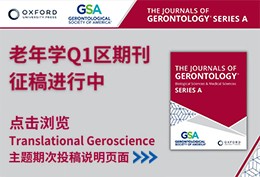
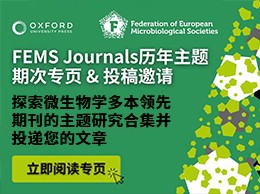





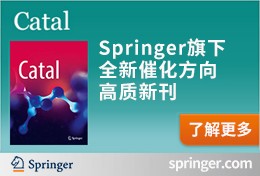
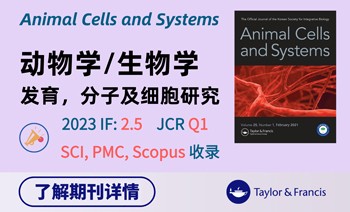










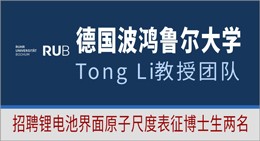











 京公网安备 11010802027423号
京公网安备 11010802027423号